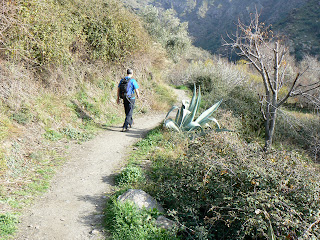Flowers
of the Sierra Nevada
Although I’m no expert
on flowers, my work as a guide in Spain’s Sierra Nevada brings me close to nature. The flowers of the Sierra Nevada are
amazingly diverse as the National and Natural parks span a wide altitude difference
with climatic zones from Mediterranean to Alpine. Also different parts of the Sierra have different geology
that also adds to the diverse spread of species.
 |
| Trumpet Gentian (Gentiana acaulis) with Plantago Nivalis - The Star of the Snows |
 |
| Sierra Nevada Violet, Viola Crassiuscula |
There are many species
and sub-species that are endemic to the Sierra Nevada, including:
Chaenorrhinum
Glareosum Blue
Dreams
Erigeron Frigidus Cold
Fleabane
Artemisia Granatensis Mountain
Camomile
Arenaria Nevadensis
Viola Crassiuscula The
Sierra Nevada Violet
Saxifrage Nevadensis
Pinguicula Nevadensis Thin
Spurred Butterwort
Gentiana Boryi
Gentiana Sierrae
Plantago Nivalis The
Star of the Snows
Additionally there are
many species common to other areas too.
 |
| hormathophylla spinosa known locally as "rascaculos" |
I have two favourite
areas for spotting plants:
 |
| Gentiana Sierae, endemic to the borreguiles |
1.
The “borreguiles”
which are areas of wet pastures besides streams and small lakes at around 2700m to 3000m (typically
Siete Lagunas).
Here you will find
various gentians and the amazing Star of the Snows which is a woolly plantain.
 |
| Ranunculus acetosellifolius, endemic to the Sierra Nevada |
2.
The high boulder and
scree fields at around 3000m to 3400m (typically Alcazaba)
This is where you will
find Blue Dreams, The Sierra Nevada Violet and the Cold Fleabane.
 |
| Thin Spurred Butterwort, Pinguicula Nevadensis endemic |
There is no doubt that
the best time to come and see the alpine flowers is early July. This is when the snow has mostly melted
and there is plenty of moisture coupled with the warm long days. There are some
nice spots accessible from the Poqueira Refuge, the Rio Seco, Rio Mulhacen and
Siete Laguna’s. The Rio Mulhacen
and Siete Laguna’s are possible as a day trip using the National Park bus from
Capileira. (details from Sierra Nevada Guides website).
 |
| St Bruno's Lilly, Paradisia liliastrum (not endemic) |
If you are venturing
into the high mountains to see the stunning wild flowers, remember that these
are serious mountains. It is likely that there will still be snow patches to
cross in July and as in all mountain environments the weather can prove problematic
with frequent high (cold) winds, mist and the occasional storm.































